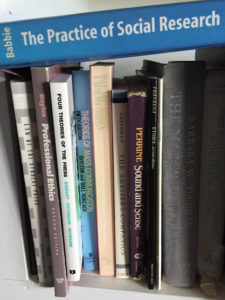In the 1980s when I was in high school and college, teachers and professors worried about the “information age” and how we were being attacked by advertisers. They were worried that poor little quaint television was warping our brains. Heck, do you remember the days when rock music was considered Satanic? Ah, the simplicity of the old days.
Well, those things are the least of our problems. With the advent and saturation of social media, we are being attacked where it matters most: in our relationships and in the comfort of our own homes.
If you have been following the stories about Cambridge Analytical you know what I am talking about. If you haven’t been following the stories, let me just say that if you have been on Facebook since about 2015, your discussions about everything from your preferences in food, clothes, and vacation locations to your political views have been sold to political machines. These machines have used your data to steal your talking points and help politicians win elections.

As a high school English and journalism teacher and a former newspaper journalist, this trend disturbs me. However, with my background, although a little late and reactionary rather than proactively, I feel that we are not yet completely defeated. We must arm ourselves and young people—students—with the tools they need to not only know this is happening, but to understand how they are being manipulated by their own words.
I am a proponent of teaching media literacy to all high school students. Recently, schools in Ohio were required to teach financial literacy in the wake of the financial crisis of 2008. What about some media literacy in the wake of the media illiteracy that has presented itself in the United States?
Cambridge Analytical is not the only problem. What about the attack from fake news? I have begun teaching my high school seniors about fake news when we read the novel 1984 by George Orwell. (If you haven’t ever read it, now is the time.) I explained how fake news works, gave students strategies to determine if a specific item was fake or real, and prepared four articles for them to determine if the article was real or fake. Of the two fake articles, about 50 percent believed one of the fake articles because it was interesting (and funny) and included a photo with the story.
Violence in video games has reached an epidemic. A police officer spoke to our school district recently about the content of video games that children as young as middle school are consuming. (An elementary teacher told me that a first grader played this particular game with his father, bragging that he hadn’t slept the night before.) Without getting into detail, let me use a few words that the officer used: “decapitating,” “prostitute,” “murder tallies.”
Without even describing the game itself, you get the picture. The officer said that he couldn’t, in mixed professional company, tell us more details about the games.
This is entertainment?
We can combat this attack with education. Every student, in my opinion, should have a media literacy class to graduate from high school.
I teach the guarantees of the First Amendment, how to spot fake news, and how the FCC regulates broadcasting to a select group of students. We even touch on media violence and the dangers of sexting. I would like to teach the entire graduating class these safeties along with other things like the negative effects of cyberbullying, advertising scams, and poor social media profiles.
If anyone out there agrees, especially fellow educators, let me know. I think it is well worth our time.
